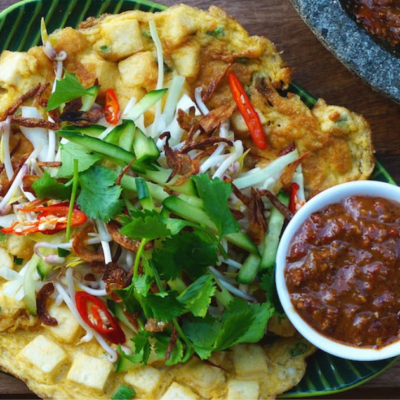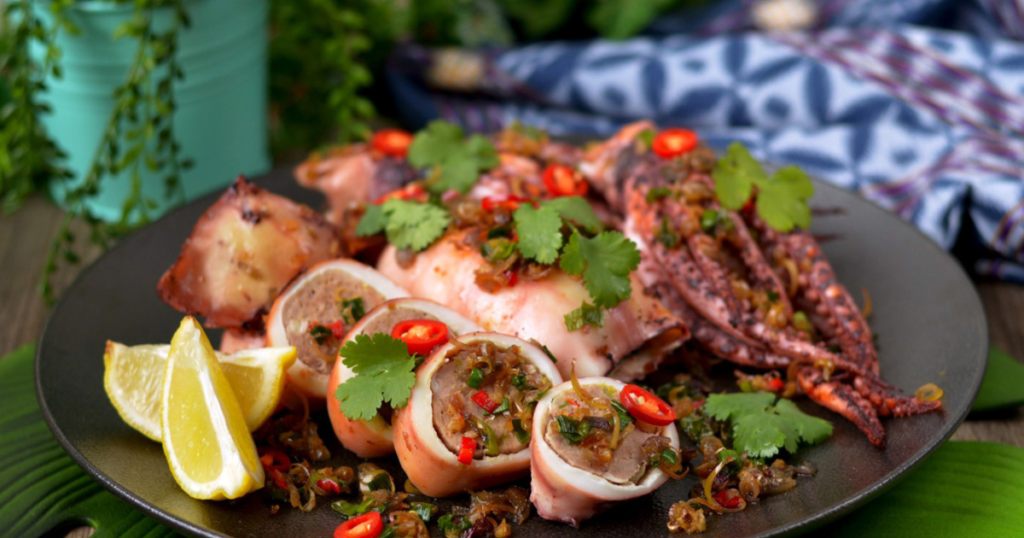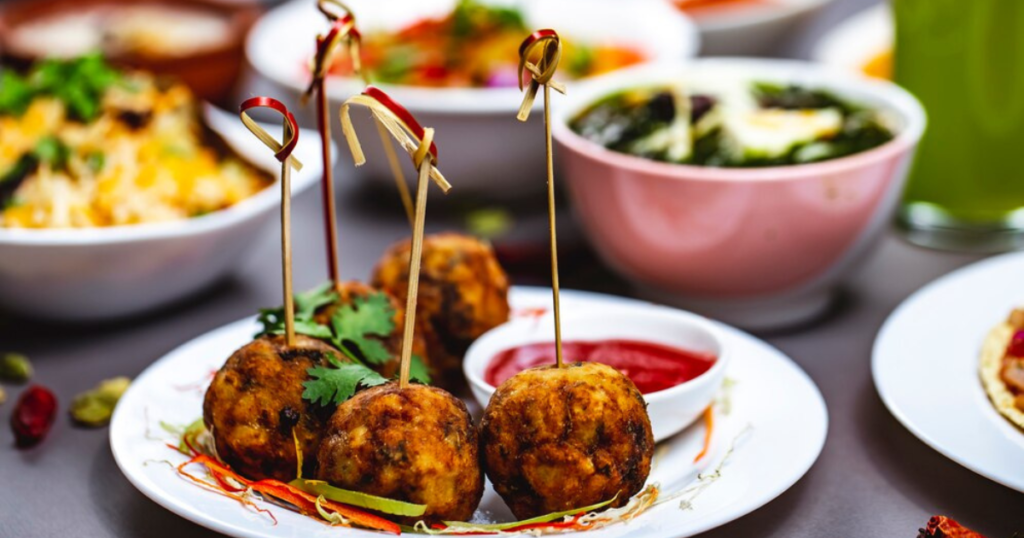Tofu, also known as tauhu, is a versatile and nutritious ingredient widely used in various cuisines around the world. From silky soups to crispy stir-fries, tauhu can be transformed into delectable dishes that satisfy both vegetarians and meat lovers alike. In this article, we’ll explore the art of making tauhu at home, along with its health benefits, cooking tips, and cultural significance.
Tauhu, derived from soybeans, has been a staple in Asian diets for centuries. Its neutral taste and sponge-like texture make it an ideal canvas for absorbing flavors from other ingredients, resulting in dishes that are both delicious and nutritious.
Types of Tauhu
- Silken Tauhu
Silken tauhu has a delicate texture and is often used in soups and desserts for its smooth consistency.
- Firm Tauhu
Firm tauhu holds its shape well and is suitable for stir-frying, grilling, or baking.
- Extra-Firm Tauhu
Extra-firm tauhu has a dense texture, making it ideal for dishes that require deep frying or grilling, as it retains its shape and absorbs flavors efficiently.
Health Benefits of Tauhu
Tauhu is not only versatile in the kitchen but also packed with nutritional benefits:
- High Protein Content: Tauhu is an excellent source of plant-based protein, making it a valuable addition to vegetarian and vegan diets.
- Low in Calories: With its low calorie and fat content, tauhu is a guilt-free ingredient for those watching their weight.
- Rich in Minerals: Tauhu is rich in essential minerals like iron and calcium, contributing to bone health and overall well-being.
Getting Started: Ingredients
To make basic tauhu, you’ll need:
- Soybeans
- Water
- Coagulant (such as nigari, gypsum, or lemon juice)
Optional ingredients for flavoring and customization include:
- Soy sauce
- Garlic
- Ginger
- Chili peppers
- Scallions
- Sesame oil
- Mirin (Japanese sweet rice wine)
Step-by-Step Cooking Instructions
Preparation:
- Soak soybeans in water overnight to soften them.
- Drain the soaked soybeans and blend them with fresh water until smooth.
- Strain the soybean mixture through a cheesecloth or nut milk bag to extract the soy milk.
- Heat the soy milk in a pot until it reaches around 180°F (82°C) while stirring constantly to prevent scorching.
Cooking Process:
- Dissolve the coagulant in water according to the package instructions.
- Slowly pour the coagulant solution into the hot soy milk while stirring gently.
- Let the mixture sit undisturbed for about 15-20 minutes to allow the curds to form.
- Once the curds have formed, carefully ladle them into a tofu mold lined with cheesecloth.
- Fold the cheesecloth over the curds and place a weight on top to press out excess liquid.
- Let the tofu mold sit for 30 minutes to an hour, depending on desired firmness.
- Remove the pressed tofu from the mold and immerse it in cold water to firm it up.
Flavoring Options
Tauhu can be flavored in various ways to suit different tastes:
Sweet
- Serve silken tauhu with a drizzle of honey or maple syrup for a simple yet satisfying dessert.
Savory
- Marinate firm tauhu in a mixture of soy sauce, garlic, and ginger before grilling or baking for a savory dish with Asian flair.
Spicy
- Stir-fry extra-firm tauhu with chili peppers, scallions, and sesame oil for a spicy and flavorful addition to your meal.
Serving Suggestions
Tauhu can be enjoyed in a variety of dishes:
- Side Dishes: Serve chilled silken tauhu with a dipping sauce or incorporate firm tauhu into salads for added protein.
- Main Courses: Use extra-firm tauhu in stir-fries, curries, or soups for a hearty and nutritious meal.
Tips for Perfect Tauhu
Cooking Techniques
- Use high-quality soybeans for the best flavor and texture.
- Experiment with different coagulants to achieve the desired firmness and taste.
- Adjust the pressing time to control the tofu’s texture.
Storage Tips
- Store unused tauhu in a container filled with water in the refrigerator to keep it fresh.
- Change the water daily to prevent spoilage and maintain the tofu’s quality.
Common Mistakes to Avoid
Overcooking
- Boiling soy milk for too long can result in a grainy texture in the final product.
- Be mindful of the cooking time and temperature to achieve smooth and creamy tauhu.
Improper Seasoning
- Tofu’s mild flavor can benefit from bold seasoning, so don’t be afraid to experiment with herbs, spices, and sauces to enhance its taste.
Variations and Substitutions
Vegan Alternatives
- Replace animal-derived coagulants with alternatives like lemon juice or vinegar for a vegan-friendly version of tauhu.
- Experiment with different plant-based milk alternatives, such as almond milk or oat milk, for unique flavors and textures.
Gluten-Free Options
- Ensure that all ingredients used in the tauhu recipe are gluten-free, including the coagulant and any flavorings or additives.
- Substitute soy sauce with tamari or coconut aminos for a gluten-free alternative in marinades and sauces.
Tauhu in Different Cuisines
Tauhu is a versatile ingredient used in various cuisines worldwide:
Asian Cuisines
- In Chinese cuisine, tauhu is commonly used in dishes like mapo tofu and tofu skin rolls.
- In Japanese cuisine, silken tauhu is often served cold with soy sauce and toppings like green onions and bonito flakes.
- In Thai cuisine, tauhu is used in dishes like pad thai and green curry.
Western Fusion Dishes
- Tofu is increasingly popular in Western cuisines, where it’s used in dishes like tofu scrambles, tofu burgers, and tofu cheesecakes, appealing to both vegetarians and health-conscious consumers.
Historical Background of Tauhu
Tofu originated in China over 2,000 years ago during the Han dynasty and spread to neighboring Asian countries like Japan and Korea. It was introduced to the West in the 20th century and has since become a staple in vegetarian and vegan diets worldwide.
Cultural Significance
Tauhu holds cultural significance in many societies:
- In China, tofu is traditionally eaten during the Lunar New Year as a symbol of prosperity and good fortune.
- In Japan, tofu-making is considered an art form, with various regional specialties and techniques passed down through generations.
- In Indonesia, tauhu is a common street food, often served fried or grilled with spicy dipping sauces.
Sustainability and Environmental Impact
While tofu is a nutritious and eco-friendly protein source, the production process can have environmental implications:
- Soybean cultivation may contribute to deforestation and habitat loss in regions like the Amazon rainforest.
- Choosing organic and locally sourced tofu can help reduce the carbon footprint associated with transportation and agricultural practices.
- Recycling tofu packaging and opting for bulk purchases can minimize waste and promote sustainability.
Conclusion
In conclusion, tauhu is a versatile and nutritious ingredient that deserves a place in every kitchen. Whether you’re a seasoned chef or a novice cook, experimenting with different types of tauhu and flavor combinations can lead to endless culinary possibilities. So why not embark on a tofu adventure today and discover the delights of homemade tauhu?
FAQs (Frequently Asked Questions)
Is tauhu the same as tofu?
- Yes, tauhu is the Malay word for tofu, both referring to the same soy-based product.
Can I freeze tauhu?
- Yes, tauhu can be frozen for up to three months. However, its texture may change slightly upon thawing.
Is tofu suitable for a gluten-free diet?
- Yes, tofu is naturally gluten-free, but be cautious of any added flavorings or sauces that may contain gluten.
How can I add flavor to plain tauhu?
- You can marinate tauhu in various sauces and seasonings before cooking, or add it to flavorful dishes like soups and stir-fries.
Can I make tauhu without a tofu mold?
- While a tofu mold helps shape the tofu, you can use alternative methods such as pressing the curds between two plates with weights on top.










